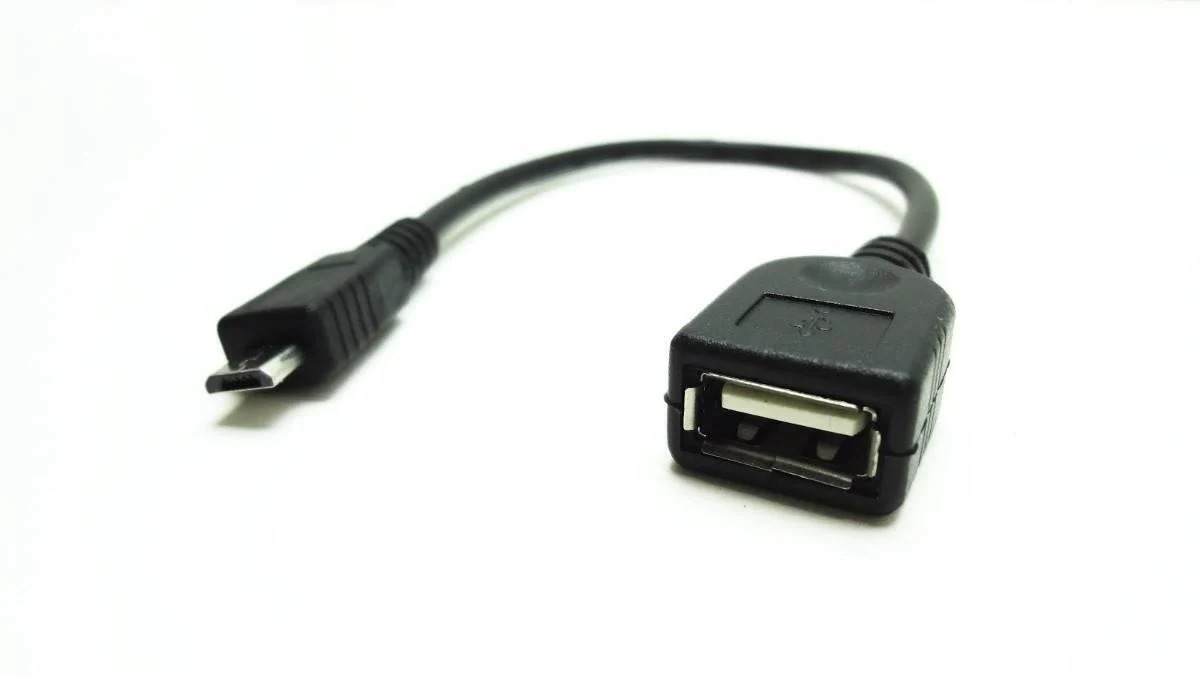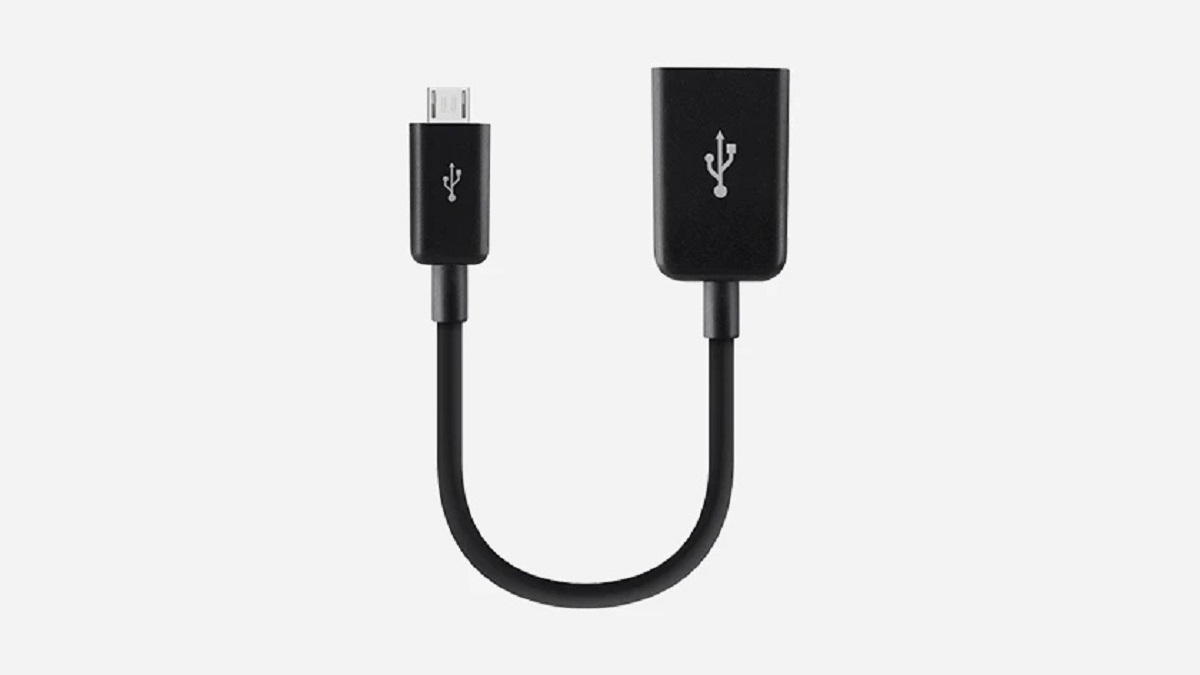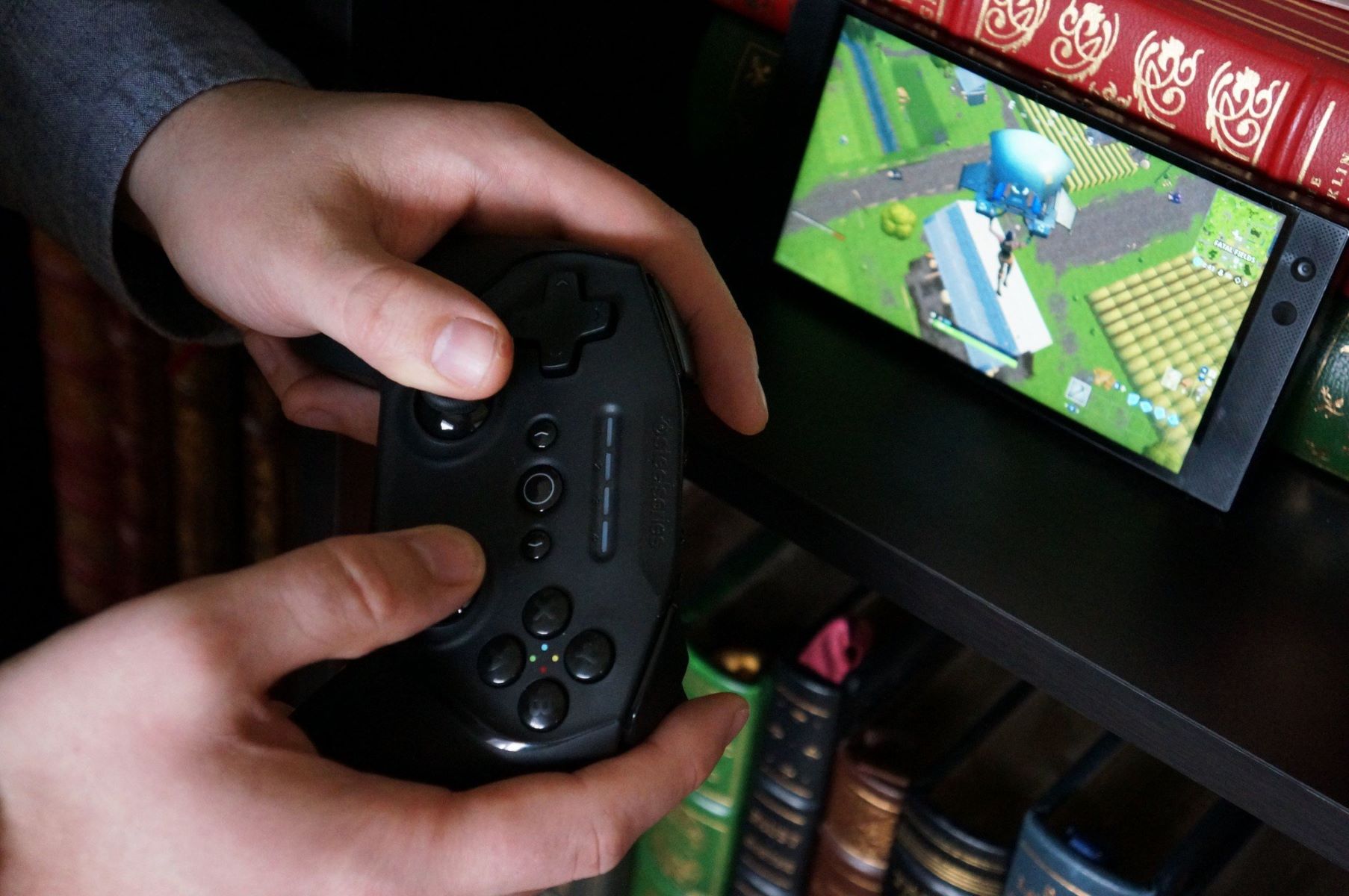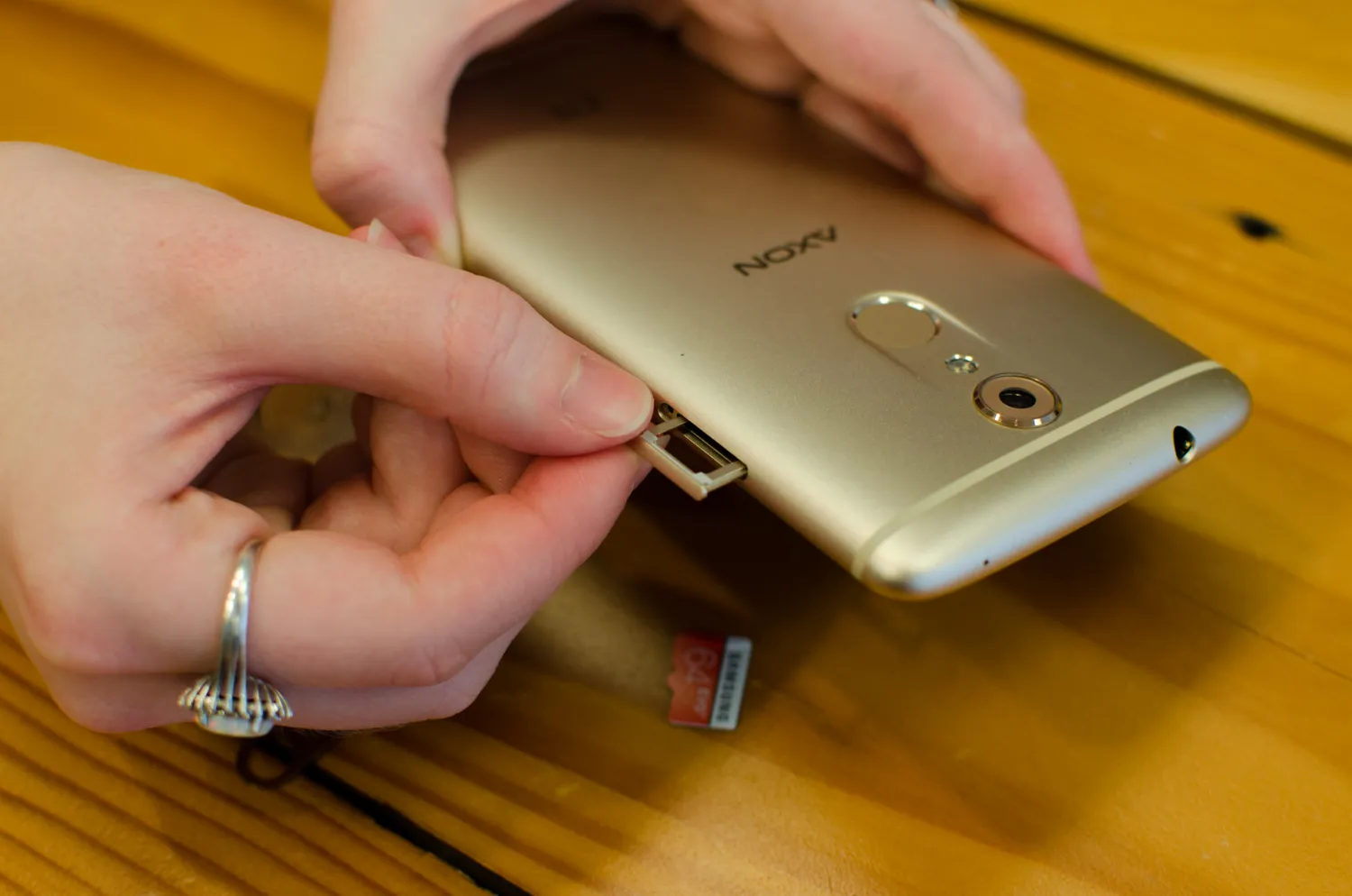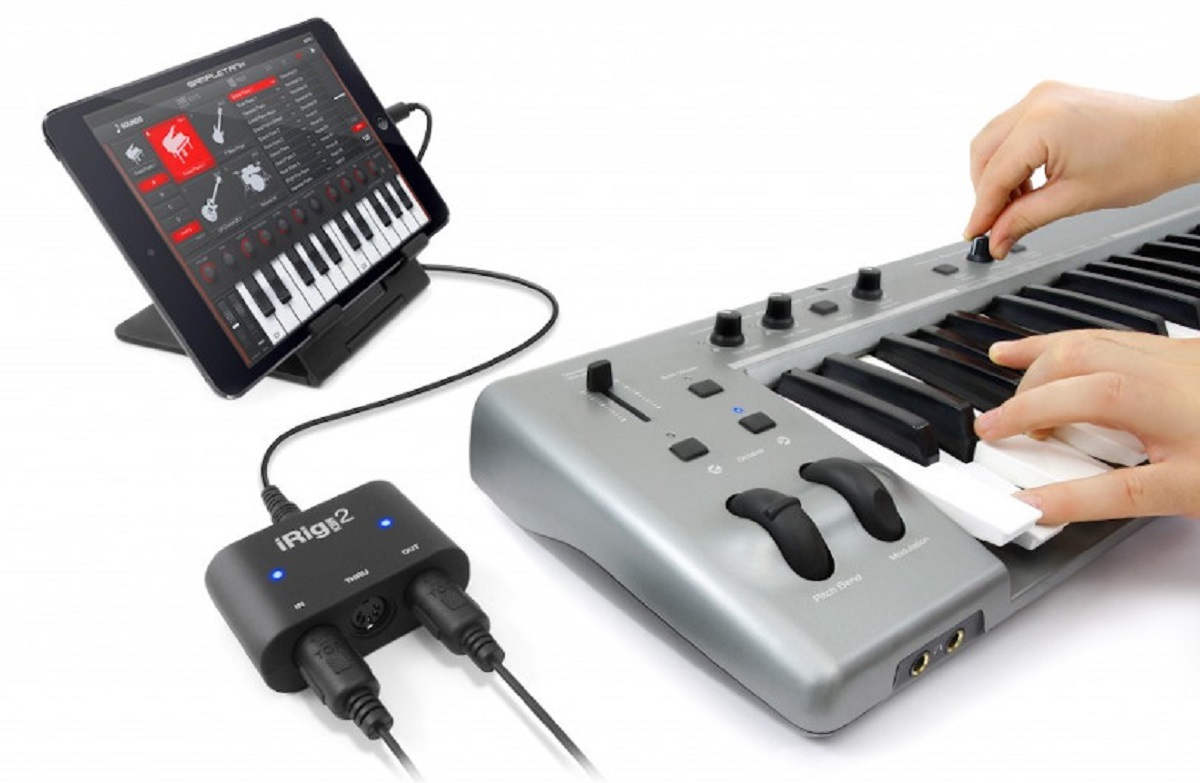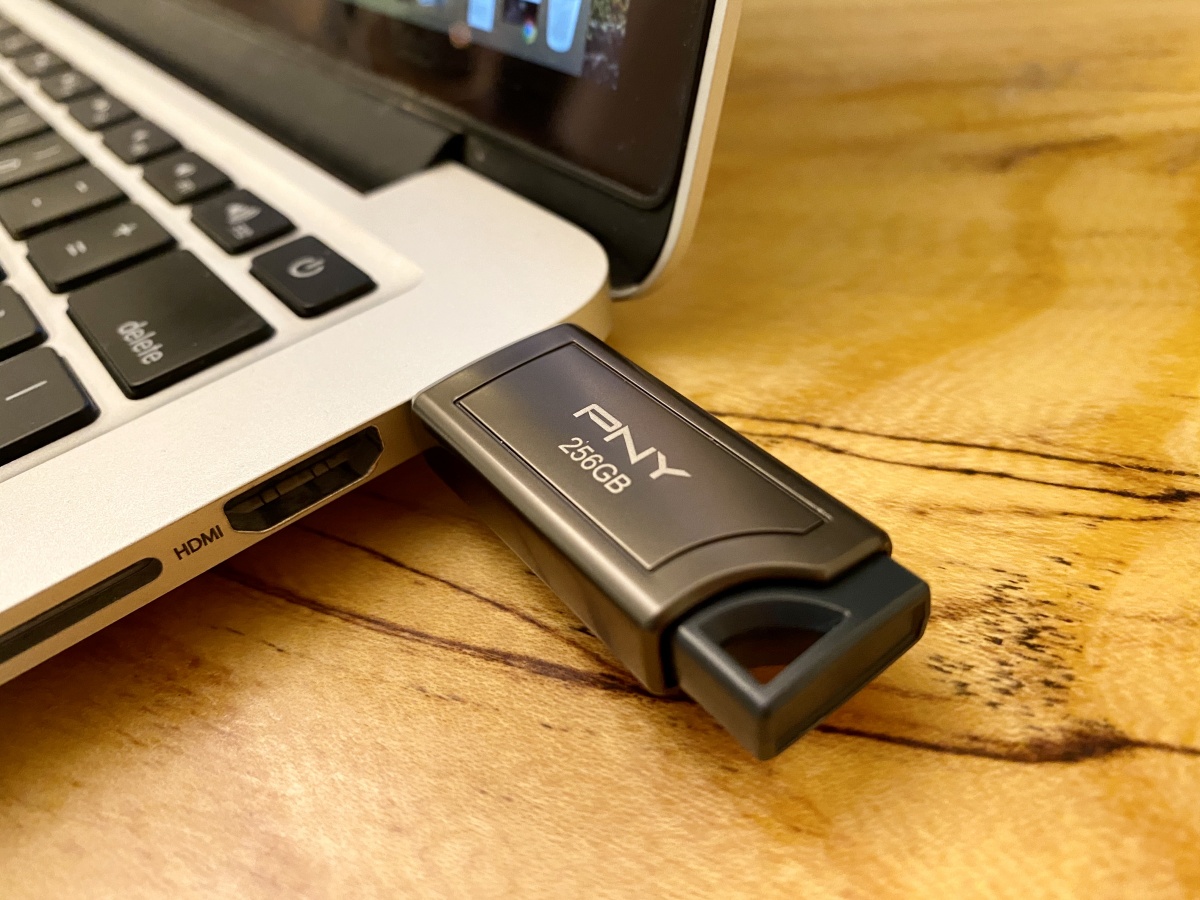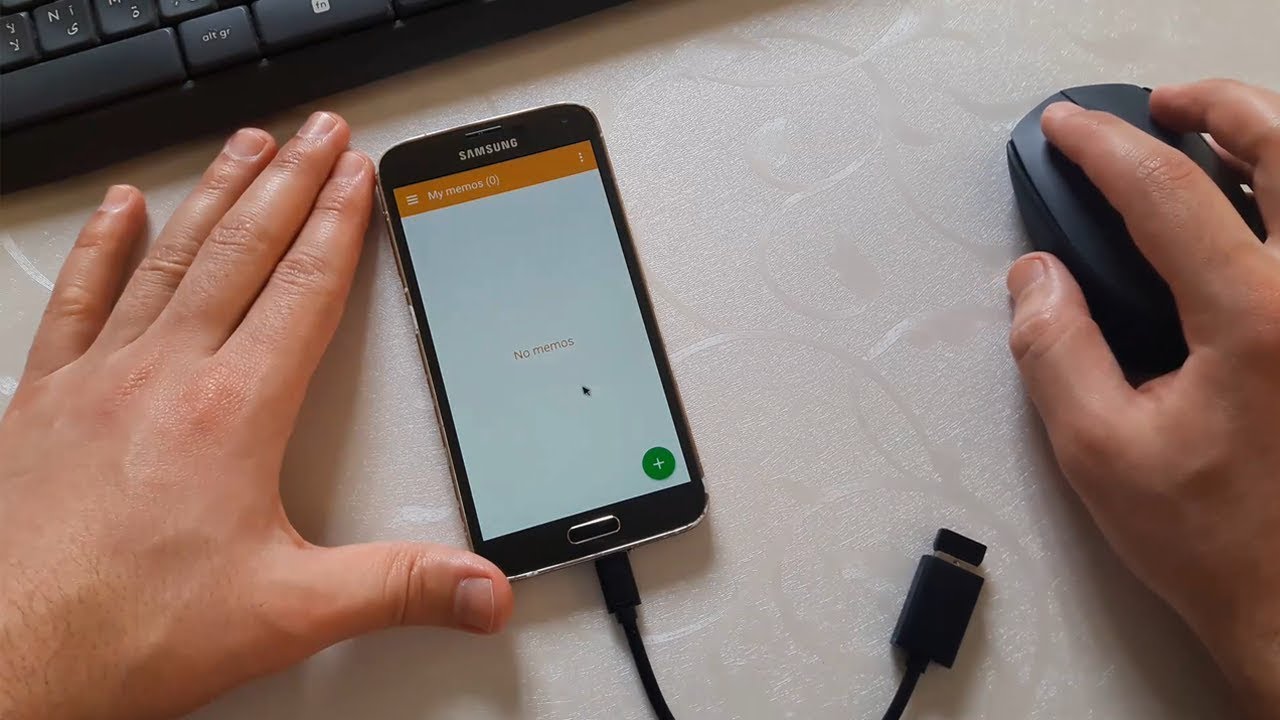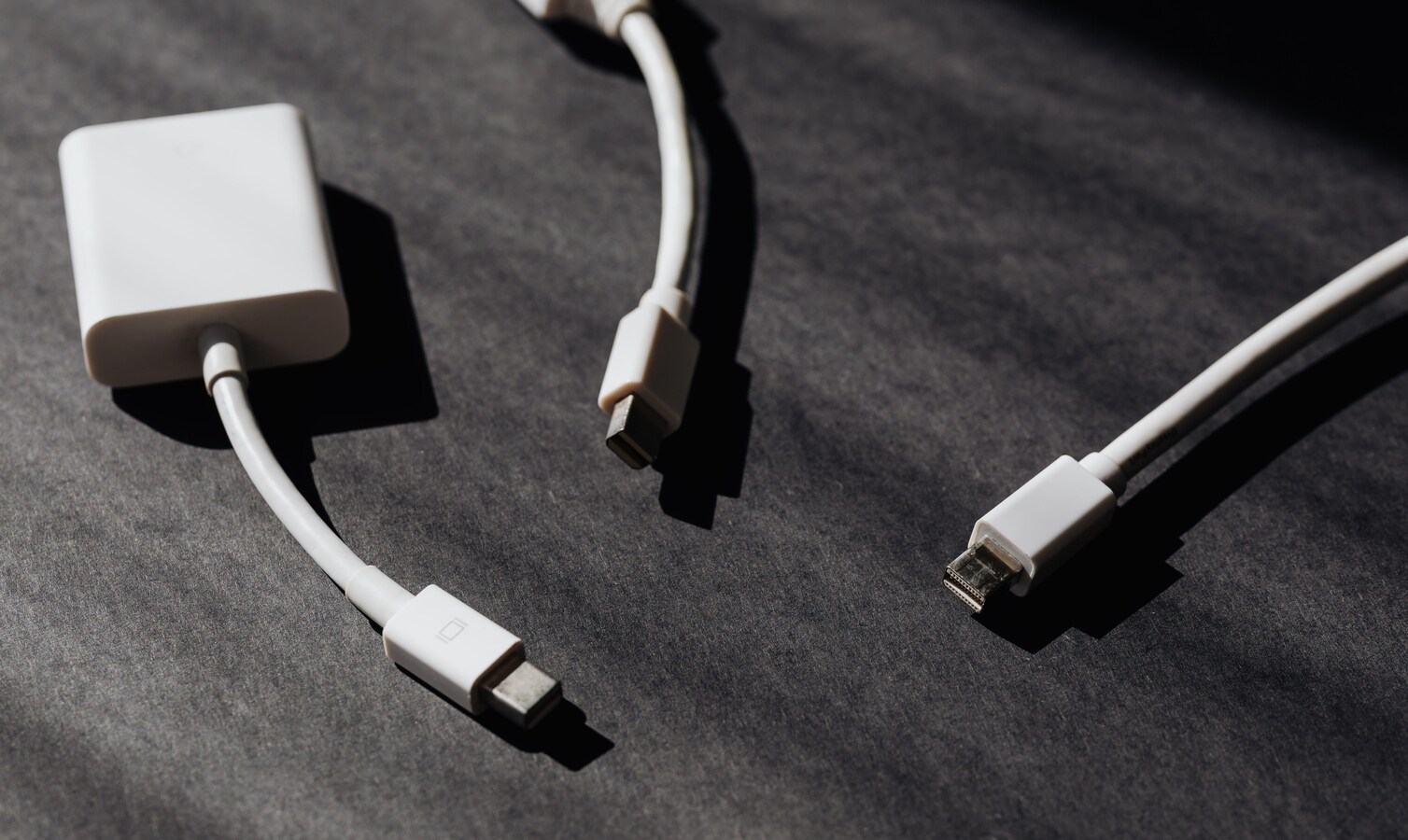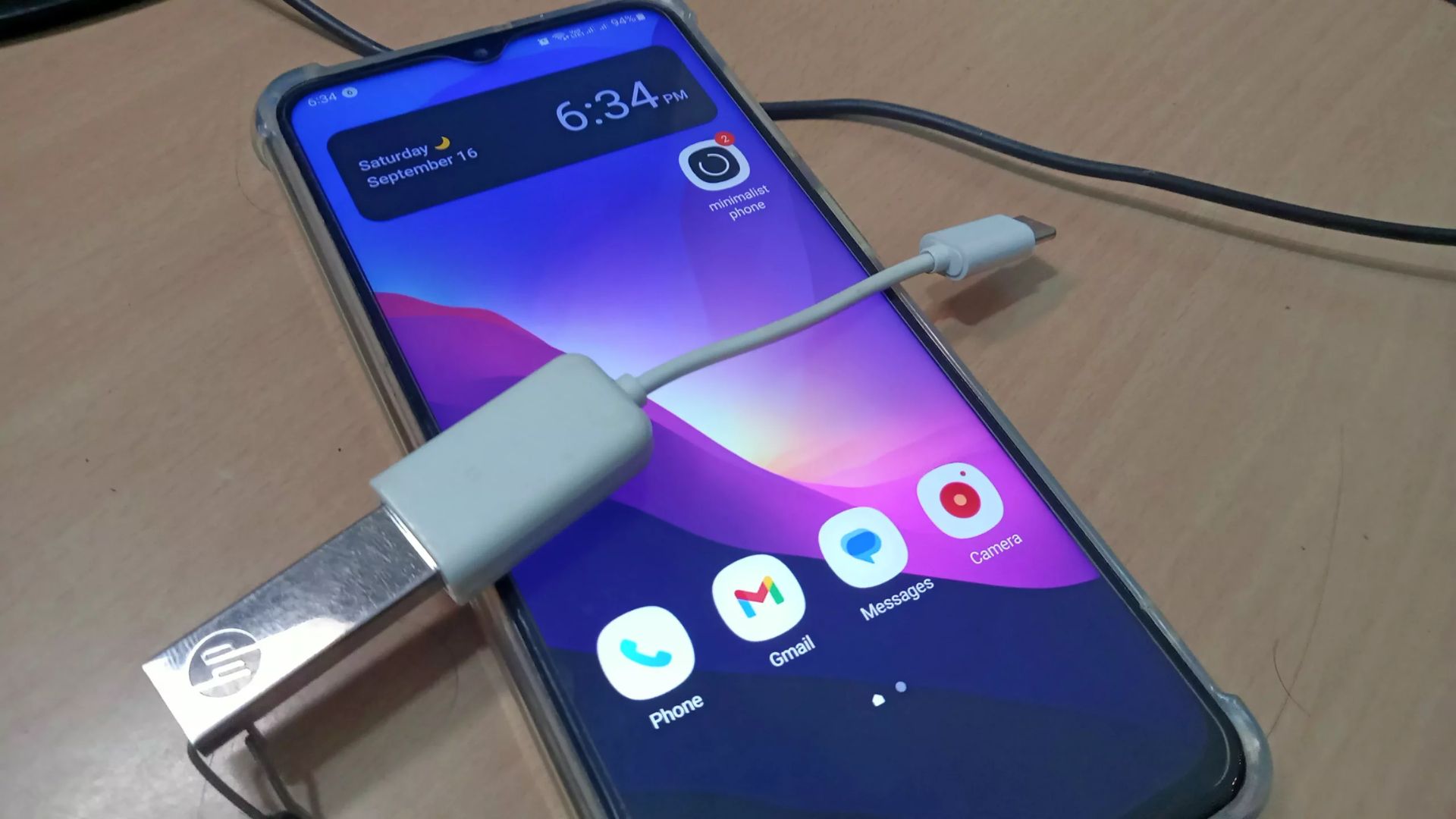Introduction
OTG, or On-The-Go, is a feature available on Android devices that allows them to act as a host and connect to various USB devices. It has revolutionized the way we interact with our smartphones and tablets, giving us the ability to expand their functionality beyond what was previously possible.
With OTG, Android devices can easily connect to a wide range of external peripherals, including USB flash drives, keyboards, mice, game controllers, and even digital cameras. This feature offers users a whole new level of convenience and flexibility, making it easier to transfer files, control devices, and perform tasks that were previously limited to traditional computers.
OTG has become increasingly popular and is now a standard feature on many Android devices. Its versatility and compatibility with a wide range of peripherals make it a valuable tool for both personal and professional use.
In this article, we will explore the features and functionality of OTG, how it works, the devices that support it, the benefits of using OTG, common use cases, and any limitations it may have. By the end of this article, you will have a clear understanding of the capabilities of OTG and how you can make the most of it.
What is OTG?
OTG, or On-The-Go, is a technology that enables mobile devices, particularly Android devices, to act as host devices and connect to various USB peripherals. In simpler terms, it allows your smartphone or tablet to act as a computer and interact with external devices such as USB flash drives, keyboards, mice, and more.
Traditionally, USB connections involve a host device, like a computer, and peripheral devices that connect to it. However, OTG breaks away from this convention by allowing Android devices to become the host, empowering them to directly communicate with USB peripherals without the need for a computer as an intermediary.
OTG is possible thanks to the USB On-The-Go specification, which was introduced by the USB Implementers Forum (USB-IF) in 2001. This specification defines the necessary protocols, connectors, and requirements for devices to be OTG compatible.
To utilize OTG capabilities, your Android device must have a Micro-USB or USB Type-C port, depending on the device’s hardware specifications. Additionally, your device’s operating system needs to support OTG functionality, which is commonly found in modern Android versions.
It’s important to note that while OTG is primarily associated with Android devices, it is not exclusive to them. Other devices, such as digital cameras, tablets, and some laptops, may also support the OTG feature. However, it has gained significant traction and popularity in the Android ecosystem due to the widespread adoption of the technology.
Overall, OTG is a groundbreaking technology that empowers users to expand their device’s capabilities and connect a variety of USB peripherals directly to their Android devices. It eliminates the need for a computer as a middleman and opens up a world of possibilities for tasks such as file transfers, device control, and more.
Features of OTG
OTG comes with a range of features that enhance the functionality of Android devices and provide users with a seamless experience when connecting external peripherals. Let’s explore some of the key features of OTG:
- Plug-and-Play: One of the most significant features of OTG is its plug-and-play functionality. This means that when you connect a compatible USB device to your Android device, it is automatically recognized and can be used without the need for additional software or drivers.
- Device Compatibility: OTG is designed to work with a wide range of USB devices, including flash drives, keyboards, mice, game controllers, and more. This versatility allows you to connect various peripherals and use them seamlessly with your Android device.
- Power Management: OTG includes power management features that ensure efficient power usage when connecting USB devices. It allows the host device, i.e., your Android device, to provide power to the connected peripheral, eliminating the need for an external power source.
- Data Transfer Speed: OTG supports high-speed data transfer rates, enabling fast and efficient file transfers between your Android device and the connected USB peripheral. This is particularly useful when transferring large files or backing up data.
- Peripheral Device Control: With OTG, you can control external devices directly from your Android device. For example, you can navigate through presentations on a connected projector, play games using a game controller, or control a digital camera remotely.
- Expandable Storage: By connecting a USB flash drive or external hard drive to your Android device using OTG, you can instantly expand your device’s storage capacity. This is especially useful if your device has limited internal storage or if you need additional space for media files, documents, or backups.
These features make OTG a powerful and versatile technology that enhances the functionality of Android devices. Whether it’s for data transfer, device control, or expanding storage, OTG provides a seamless connection between your Android device and external peripherals.
How does OTG work?
OTG enables Android devices to act as host devices, allowing them to connect and interact with USB peripherals. But how does this technology work?
When you connect a USB device to an Android device using OTG, a process called USB OTG negotiation takes place. In this process, the Android device checks if the connected USB device is compatible with OTG and if it requires power from the Android device.
If the connected USB device is OTG compatible, the Android device switches its USB controller to host mode, allowing it to communicate with the USB peripheral directly. This switch in mode allows the Android device to take control and manage the connected USB device without the need for a computer.
In terms of physical connections, OTG uses a special cable called an OTG cable or an OTG adapter. This cable has a standard USB connector on one end, which is plugged into the USB peripheral, and a Micro-USB or USB Type-C connector on the other end, which is plugged into the Android device. This cable allows the Android device to receive power and establish a data connection with the USB peripheral.
Once the connection is established, the Android device can perform various functions depending on the type of USB peripheral connected. For example, if a USB flash drive is connected, you can access and manage the files stored on the flash drive directly from your Android device. Similarly, if you connect a keyboard or a mouse, you can use them for input and control.
It’s important to note that not all USB devices are OTG compatible, as some peripherals require more power or specific drivers that may not be available on Android devices. Therefore, it’s essential to check the compatibility of your USB devices with OTG before attempting to use them with your Android device.
Overall, OTG works by enabling the Android device to switch to host mode, allowing it to communicate and interact with USB peripherals. This allows for a seamless connection and integration of various USB devices with your Android device, expanding its capabilities and enhancing its usability.
Supported Devices
While OTG is primarily associated with Android devices, it is important to understand which specific devices are compatible with this feature. Here are the types of devices that generally support OTG:
- Android Smartphones: Most modern Android smartphones are equipped with OTG capabilities. This includes popular brands like Samsung, LG, Google Pixel, Sony, and more. However, it’s always a good idea to check the specifications of your specific smartphone model to ensure OTG compatibility.
- Android Tablets: Similar to smartphones, many Android tablets are also equipped with OTG support. Tablets from various manufacturers, such as Samsung, Lenovo, Asus, and Huawei, often come with OTG functionality. Again, it’s important to verify the specifications of your particular tablet model.
- Other Devices: While Android devices dominate the market when it comes to OTG support, other devices can also be compatible. Some digital cameras, e-readers, and even certain laptops may have OTG capabilities. However, this is less common compared to Android devices.
It’s worth noting that even if your device supports OTG, you may still need to ensure that your device’s operating system version is compatible. Some older or budget Android devices may have limitations regarding OTG support, so be sure to check with the manufacturer or refer to the device’s documentation.
Additionally, not all USB peripherals are guaranteed to work with every OTG-supported device. USB compatibility can vary depending on factors such as power requirements, drivers, and device compatibility. It is always best to verify the compatibility of your specific USB peripheral with your Android device before use.
In summary, OTG support is commonly found in modern Android smartphones and tablets, with varying degrees of compatibility across different models and brands. While other devices may also be OTG-compatible, Android devices offer broader availability and support for this feature.
Benefits of using OTG
Using OTG technology on your Android device brings several benefits and opens up a world of possibilities. Let’s explore some of the key advantages of using OTG:
- Expanded Functionality: OTG allows you to connect a wide range of USB devices directly to your Android device, expanding its functionality beyond its intrinsic capabilities. You can easily connect USB flash drives, keyboards, mice, game controllers, and more, making your device more versatile and capable.
- Ease of File Management: With OTG, you can conveniently transfer files between your Android device and a USB flash drive or external hard drive. This makes it easier to back up important data, transfer files between devices, and access files on the go without the need for a computer.
- Effortless Device Control: When connected via OTG, various USB peripherals such as keyboards, mice, and game controllers can be used to navigate and control your Android device. This is particularly useful when working on documents, playing games, or even using your device as a media center.
- Increased Storage Capacity: By connecting a USB storage device to your Android device using OTG, you can instantly expand your device’s storage capacity. This is especially valuable for devices with limited internal storage, allowing you to store more media files, documents, or backups.
- On-the-Go Convenience: OTG technology eliminates the need for a computer as an intermediary when working with USB devices. Whether you’re traveling, in a café, or in a meeting, you can easily connect and use USB devices with your Android device, providing convenience and flexibility wherever you go.
These benefits make OTG a valuable feature for Android device users. It enhances the user experience, adds versatility, and empowers users to do more with their devices. Whether it’s accessing files, controlling devices, or expanding storage, OTG simplifies the way we interact with our Android devices.
Common Uses of OTG
OTG opens up a wide range of practical applications and use cases for Android device users. Let’s explore some of the common uses of OTG:
- File Transfers: One of the most popular uses of OTG is for transferring files between devices. By connecting a USB flash drive or external hard drive to your Android device, you can quickly and easily transfer files, such as photos, videos, documents, and more, without the need for an internet connection or a computer.
- Peripheral Connections: OTG allows you to connect various peripherals directly to your Android device. This opens up possibilities for using a physical keyboard or mouse with your tablet or smartphone, making typing and navigation more comfortable and efficient.
- Media Playback: With OTG, you can connect USB drives or SD card readers to your Android device to play movies, music, or view photos directly without consuming internal storage. This is particularly useful for devices with limited storage or when you want to access a large media collection on the go.
- Gaming: Gamers can benefit from OTG by connecting game controllers to their Android devices. This enhances the gaming experience, allowing for more precise control and compatibility with a wider range of games. It’s like having a portable gaming console in your pocket.
- Device Control: OTG enables you to control external devices with your Android device. For example, you can connect your Android device to a digital camera and use it as a remote control for taking photos or recording videos. This can be particularly helpful when setting up shots or capturing group photos.
- Accessing Data from Old Devices: If you have an old USB device or external hard drive that you want to access, OTG can help. By connecting the device to your Android device, you can access and retrieve data from older storage devices that may not be compatible with newer computers.
These are just a few common uses of OTG, but the possibilities are practically endless. The ability to connect and interact with a wide range of external devices directly from your Android device greatly expands its capabilities and provides convenience in various scenarios.
Limitations of OTG
While OTG offers numerous advantages, it also comes with certain limitations that are important to consider. Here are some of the limitations of OTG:
- Power Restrictions: OTG allows your Android device to provide power to connected USB peripherals. However, there are limitations to the amount of power it can supply. Some USB peripherals, such as external hard drives or power-hungry devices, may require more power than what your Android device can provide, resulting in compatibility issues.
- Device Compatibility: Not all USB devices are guaranteed to work with every OTG-supported Android device. While most commonly used USB devices like flash drives, keyboards, and mice are compatible, more specialized or niche devices may not be recognized or fully supported by all Android devices.
- Software and Driver Support: Certain USB peripherals, especially those requiring specialized software or drivers, may not have adequate support for Android devices. This means that some features or functionalities of certain USB devices may not work as intended when connected via OTG to your Android device.
- Limited Access to Internal Storage: When using external storage devices with OTG, keep in mind that access to internal storage may be limited. Some Android devices may not allow simultaneous access to both internal storage and external storage devices, which could impact file management and data transfer workflows.
- Port Availability: OTG requires a dedicated Micro-USB or USB Type-C port on your Android device. If your device only has a single port, using OTG may restrict your ability to charge the device while connected to a USB peripheral. In such cases, you may need to use a USB hub or prioritize between charging and using OTG functionality.
Understanding these limitations can help you make informed decisions when using OTG and selecting the appropriate devices and peripherals for your needs. While OTG offers great flexibility and functionality, it’s important to be aware of its limitations to ensure a smooth and efficient user experience.
Conclusion
OTG, or On-The-Go, is a powerful feature that has revolutionized the way we interact with our Android devices. It allows us to connect a wide range of USB peripherals directly to our smartphones and tablets, expanding their functionality and versatility.
Through OTG, we can effortlessly transfer files, control external devices, expand storage capacity, and enhance our overall user experience. The plug-and-play nature of OTG, combined with its support for various USB devices, makes it a convenient and valuable tool for both personal and professional use.
However, it’s important to be aware of the limitations of OTG, such as power restrictions, device compatibility, and software support. Understanding these limitations can help us make informed decisions and ensure the smooth functioning of OTG-enabled connections.
Despite its limitations, the benefits of using OTG outweigh the drawbacks. It empowers us to do more with our Android devices, providing convenience, flexibility, and expanded functionality on the go. Whether it’s transferring files, controlling devices, or accessing data from older devices, OTG opens up a world of possibilities.
As OTG technology continues to evolve, we can expect even more advancements and improved compatibility with a wider range of USB devices. With the growing ubiquity of OTG support in modern Android devices, it is becoming an essential feature for users who seek to make the most of their smartphones and tablets.
In conclusion, OTG is a technology that has transformed the way we utilize our Android devices. It enables us to unlock their full potential, connect with external devices, and enhance productivity in various scenarios. With its numerous benefits and broad compatibility, OTG is undoubtedly a valuable feature that enhances the overall user experience for Android device users.







